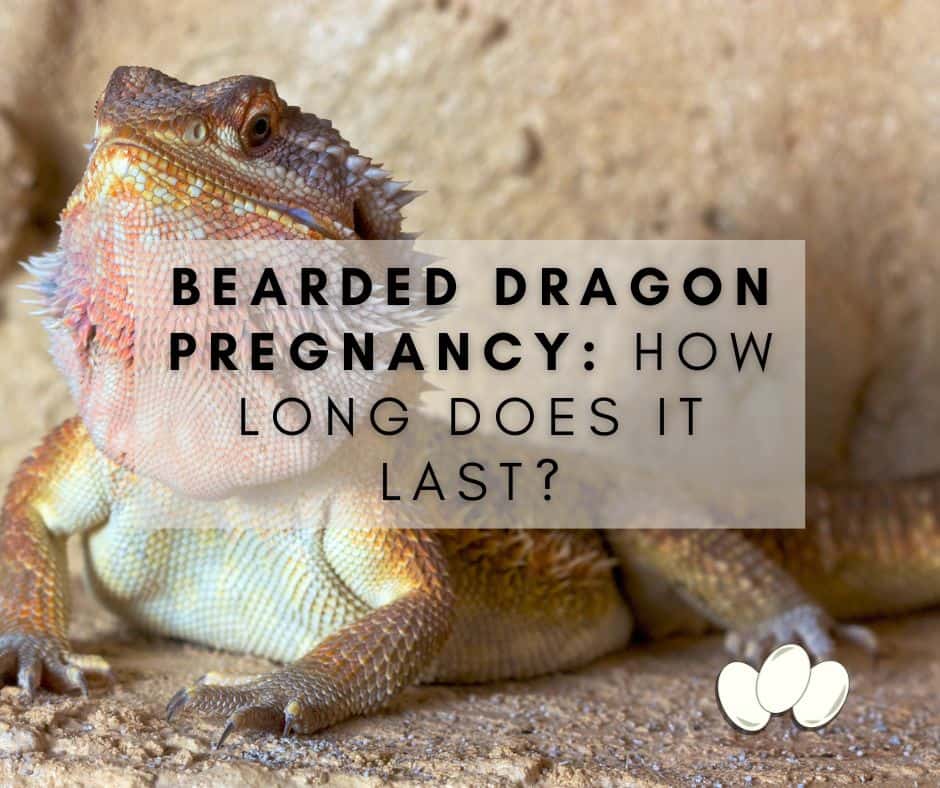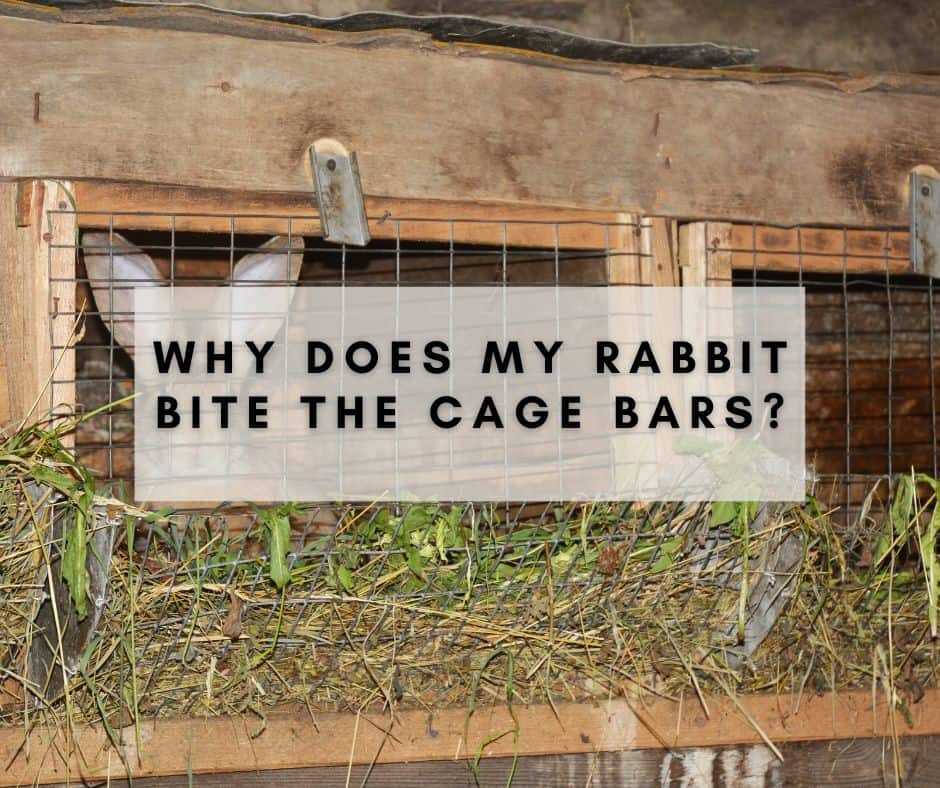As a bearded dragon owner, it is crucial to understand their reproductive process and how long they are pregnant. Not only does this knowledge help you prepare for the arrival of new bearded dragon babies, but it also plays a significant role in ensuring your pet’s overall health and well-being. Bearded dragons are fascinating creatures with unique reproductive systems.
Understanding their gestation period and signs of pregnancy can help you provide the proper care that your pregnant bearded dragon needs. This knowledge will also allow you to make informed decisions about breeding your pets if you choose to do so.
Contents
- 1 Gestation Period for Bearded Dragons: How Long Do They Stay Pregnant?
- 2 Signs of Pregnancy in Bearded Dragons: What to Look Out For
- 3 Caring for Pregnant Bearded Dragons: What You Should Know
- 4 Hatching and Raising Baby Bearded Dragons: A Delightful Experience
- 5 Understanding Bearded Dragon Pregnancy Is Essential
- 6 Gestation Period for Bearded Dragons
- 7 Signs of Pregnancy in Bearded Dragons
- 8 Caring for Pregnant Bearded Dragons
- 9 Hatching and Raising Baby Bearded Dragons
- 10 Conclusion
Gestation Period for Bearded Dragons: How Long Do They Stay Pregnant?
The gestation period for bearded dragons varies depending on various factors such as temperature, age, and stress levels. Typically, female bearded dragons carry their eggs for around four to six weeks before laying them. However, this duration may range from three to eight weeks or more.
It is essential to monitor your pet closely during their pregnancy as any deviation from normal behavior could signal underlying health issues that require prompt medical attention. Additionally, keeping track of the gestation period will help ensure that you have everything prepared in time for the arrival of the baby dragons.
Signs of Pregnancy in Bearded Dragons: What to Look Out For
If you suspect that your female bearded dragon is pregnant, several physical signs can confirm your suspicions. The most obvious sign is a visible bulge in her abdomen area as she carries her eggs. Other physical changes include weight gain and changes in appetite and bowel movements.
Behavioral changes may also occur during pregnancy such as increased aggression or restlessness. These symptoms vary among individual lizards; thus, close observation is necessary to determine if your pet is indeed pregnant.
Caring for Pregnant Bearded Dragons: What You Should Know
Caring for pregnant bearded dragons requires careful attention to ensure their health and well-being. Firstly, provide your pet with a comfortable nesting area to lay their eggs.
The nesting area should include appropriate substrate, temperature, and humidity levels that mimic the natural habitat of bearded dragons. You must also pay close attention to your diet during pregnancy.
Pregnant bearded dragons require more protein-rich food sources to support egg production and embryonic development. Ensure that their diet includes a balanced mix of vegetables, insects, and supplements as recommended by your veterinarian.
Hatching and Raising Baby Bearded Dragons: A Delightful Experience
The moment you’ve been waiting for has finally arrived—the eggs have hatched! Caring for baby bearded dragons is an incredibly delightful experience that requires proper care and attention. Newly hatched baby dragons require specialized care in terms of feeding, hydration, temperature regulation, lighting requirements, and socialization.
Additionally, you must ensure the hatchlings are separated by sex from an early age to avoid mating between siblings or other related individuals. By following these essential tips on caring for baby bearded dragons, you can help them grow into happy and healthy adults.
Understanding Bearded Dragon Pregnancy Is Essential
Understanding how long bearded dragon pregnancies last is essential knowledge for all reptile enthusiasts. It allows us to provide the best possible care for our pets while ensuring their overall health and well-being. Whether you plan on breeding your lizards or just want to stay informed about their reproductive process—knowing when they are pregnant will undoubtedly make life easier for both you and your pets.
The Basics of Bearded Dragon Reproduction
Let’s start with the basics. Bearded dragons are sexually dimorphic, meaning males and females have physical differences that allow them to reproduce. Males have a larger head and are generally larger overall, while females have a smaller head and a wider body to accommodate egg-laying.
Bearded dragons mate through copulation, where the male inserts his hemipenes into the female’s cloaca. Once fertilization occurs, the female will begin to develop eggs.
The Role of Temperature in Determining the Sex of Bearded Dragon Offspring
Now let’s talk about something controversial: temperature-based sex determination. Some people advocate for it as a natural occurrence in some reptile species, while others claim it is unethical and can lead to issues with gender ratios in captive breeding programs. Regardless of your stance on temperature-based sex determination, it is important to understand how it works in bearded dragons.
When eggs are incubated at lower temperatures (around 80°F), they tend to develop into male offspring. If incubated at higher temperatures (around 90°F), they tend to develop into female offspring.
This knowledge can be helpful if you’re trying to breed bearded dragons or simply want a male or female pet. However, it’s important not to manipulate temperatures too much or rely solely on this breeding method.
Genetics also plays a significant role in determining offspring’s gender. Overall, understanding bearded dragon reproduction can help you provide better care for your pets and make informed decisions about breeding or purchasing them as pets.
Gestation Period for Bearded Dragons
Are you ready to wait for months on end, wondering when your bearded dragon is going to give birth? Well, buckle up because the gestation period for bearded dragons can range anywhere from 40 to 90 days.
That’s right, you could be waiting almost three months for those cute babies to arrive. But wait, it gets better (or worse depending on how you look at it).
The length of gestation time is impacted by various factors such as temperature and stress levels. So if you’re not providing the optimal environment for your female bearded dragon or if she’s feeling particularly stressed out, that gestation period could drag on even longer.

Reptile Incubator
A Range of Possible Gestation Periods
There’s no definitive answer when it comes to the length of a bearded dragon’s pregnancy. It can vary significantly from one individual to another.
On average, however, most female dragons are pregnant for around 60 days. Some may deliver their young much sooner; others might take longer than average.
In some cases, a female dragon may not carry its eggs full-term at all; something which can occur due to various factors such as low temperature or poor nutrition.
The Impact of Temperature and Stress Levels
Temperature plays a significant role in determining the length of a bearded dragon’s pregnancy. In general,
higher temperatures will speed up ovulation and reduce the gestation period while lower temperatures will prolong it. However, there are limits too- too high temperatures will kill developing embryos while too low ones will cause them not to develop properly in the first place.
Stress levels also have a significant impact on gestation time. If your female dragon is under stress due to any reason,
such as poor handling or lack of food or water supply, her body might delay giving birth until she relaxes again.
Stress can also cause her to lay fewer eggs than usual or even stop laying altogether. The gestation period for bearded dragons is unpredictable, and many factors can impact it.
As a responsible pet owner, you should strive to provide your dragon with the best care possible and minimize stress levels as much as possible during pregnancy. Remember, a happy and healthy mother will lead to happy and healthy offspring!
Signs of Pregnancy in Bearded Dragons
Looking for the Tell-Tale Signs of a Pregnant Bearded Dragon
If you’re a responsible pet owner, you’ll want to be aware of the physical and behavioral changes that occur when your female bearded dragon becomes pregnant. Knowing what to look for can help ensure that she receives the proper care and attention throughout her pregnancy. One of the most obvious signs that your bearded dragon is pregnant is a noticeable increase in size.
As her eggs develop, she will begin to swell around her belly area, and her abdomen will become noticeably distended. You may also notice that her skin appears stretched or taut in this area.
Another physical sign of pregnancy in bearded dragons is a change in coloration around the eyes and lips. Pregnant females often exhibit darker pigmentation around these areas, which can range from dark gray to black.
The Behavioral Changes You Can Expect During Pregnancy
In addition to these physical signs, there are also several behavioral changes that you may observe as your bearded dragon progresses through her pregnancy. One of the most common changes is a decrease in activity levels – as she grows larger and heavier, she will naturally become less active than before.
You may also notice changes in eating habits or appetite during pregnancy. Some females will begin to eat less frequently or refuse certain foods altogether, while others may crave specific types of food or supplements.
It’s important to note that pregnant bearded dragons can become more aggressive or defensive than usual due to hormonal fluctuations. If you notice any unusual behavior or aggression towards other pets or humans, it’s important to handle your pet carefully and provide plenty of space for privacy during this time.
Caring for Pregnant Bearded Dragons
Feeding and Dietary Needs
Let me tell you something, folks. If you’re going to take on the responsibility of caring for a pregnant bearded dragon, you better be prepared to feed that little mamma like a queen. That means no skimping on the greens, folks.
Bearded dragons need plenty of fresh fruits and vegetables to keep them healthy during pregnancy. Make sure to provide a variety of leafy greens like kale and collards, as well as squash and other nutrient-dense veggies.
And don’t forget about protein! Offer mealworms or crickets as a treat once a week for some extra nutrition.
Environmental Conditions
Listen up, people. Your pregnant bearded dragon needs more than just a cozy nesting area to thrive during pregnancy.
They require specific environmental conditions that mimic their natural habitat to stay healthy and comfortable. Keep the temperature in their enclosure between 80-90°F during the day and around 70°F at night.
Humidity levels should be kept around 40-60%. Make sure your pet has access to both UVB lighting and basking spots so they can regulate their body temperature properly.
Nesting Tips
Alright, this is where things get serious, folks. Creating a comfortable nesting area for your pregnant bearded dragon is critical for her health and the health of her babies. Start by choosing an appropriately-sized container with plenty of ventilation that’s filled with a moist substrate like coconut coir or sphagnum moss.
Place this container in your pet’s enclosure so she can start burrowing when she’s ready to lay eggs. But here’s where things get interesting: some people believe that adding small amounts of calcium powder or even cuttlebone pieces near the nesting area can help support healthy egg development.
And while there’s not a ton of scientific evidence to back this up, it certainly can’t hurt. Just make sure your pet has access to plenty of fresh water and calcium-rich foods during pregnancy.
Alright, folks. There you have it.
Caring for a pregnant bearded dragon may seem like a daunting task, but if you follow these tips and provide your pet with the care she needs, you’ll be rewarded with healthy hatchlings and a happy mamma. Good luck out there!

Incubator for Hatching Eggs
Hatching and Raising Baby Bearded Dragons
Little Ones Arrive: What Happens After the Eggs Hatch
Once your bearded dragon eggs hatch, you will need to take care of the babies. They are delicate at this stage, so handling them carefully is crucial. You may have to help them break out of their shells if they struggle.
Once they hatch, it’s important to get them out of the enclosure as soon as possible since adult bearded dragons can be aggressive toward their offspring. The baby dragons should also be separated from each other since they can become cannibalistic and fight over resources.
Taking Care of Baby Bearded Dragons
Feeding baby bearded dragons can be challenging, but it’s necessary for their growth and development. They require a diet that is high in protein and calcium.
Younger dragons should eat small insects like crickets and mealworms daily to ensure healthy growth. You can also offer them leafy greens such as collard greens or kale as well as fruits like strawberry or blueberry.
When it comes to housing, a smaller enclosure with a secure lid is essential for baby beardies since they are more prone to escape attempts compared to adults. The temperature in their enclosure should range between 80-90°F during the day and around 70°F at night.
Make sure you don’t overcrowd your baby dragons’ space with too many hides or decorations because they need ample room to move around freely without getting hurt or stressed out. Taking care of baby bearded dragons requires patience, knowledge about proper nutrition, and environment along with diligent attention in providing ample space for them to grow unharmed by adult beardies or stressors from overcrowding environments.
Conclusion
Bearded dragons are fascinating creatures, and understanding their reproductive process is crucial for any pet owner. We have discussed the basics of bearded dragon reproduction, including mating and egg fertilization.
We also delved into the length of time a bearded dragon is pregnant, which can range from 50 to 75 days depending on various factors. It’s important to recognize the signs of pregnancy in your female bearded dragon and take appropriate care of them during this delicate time.
A comfortable nesting area, proper temperature, lighting conditions, and diet are crucial aspects of caring for pregnant bearded dragons. Once the eggs hatch, it’s essential to know how to care for baby bearded dragons properly.
This includes feeding them a varied diet, providing them with adequate heat and UVB lighting, and ensuring they have enough space to roam around freely but safely. Owning a bearded dragon can be an exciting experience filled with many adventures and discoveries along the way.
Being equipped with knowledge about their reproductive process will undoubtedly add to that. Taking care of your pets during pregnancy must not only ensure their health but also prepare you as an owner for what lies ahead when they hatch!




